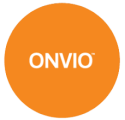Mastering Your Finances: Key Personal Finance Strategies for Millennials

As millennials continue to advance through significant life milestones, their financial strategies must evolve to meet their changing needs. Understanding key concepts such as the time value of money, tax-deferred savings, and the nuances of healthcare and education funding can dramatically affect long-term financial health. This guide explores essential financial strategies for millennials, offering insights and examples to help navigate these crucial areas.
1. Embracing the Time Value of Money
The time value of money (TVM) is a fundamental financial principle suggesting that money available now is worth more than the same amount in the future due to its potential earning capacity. This core tenet of finance highlights the importance of investing early.
Key Strategy:
• Start Investing Early: Even small amounts invested regularly can grow significantly due to compound interest. For example, investing $200 a month starting at age 25 could grow to more than $400,000 by age 65, assuming a 7% annual return.
2. Leveraging Tax-Deferred Savings
Tax-deferred savings accounts, such as 401(k)s and IRAs, allow investments to grow without being taxed on the earnings until they are withdrawn, typically during retirement when your tax bracket may be lower.
Key Strategy:
• Maximize Retirement Contributions: Contribute to your employer's 401(k) up to the match to leverage free money and reduce your taxable income. For example, if your employer matches contributions up to 3% of your salary, ensure you contribute at least that amount.
3. Navigating Student Loan Debt Forgiveness
Many millennials are burdened by student loan debt. Understanding programs like Public Service Loan Forgiveness (PSLF) or income-driven repayment plans can offer significant financial relief.
Key Strategy:
• Explore Forgiveness Programs: If you work in public service, you may qualify for PSLF, which forgives the remaining balance on your loans after 120 qualifying payments. Regularly check for updates to federal programs that might offer additional forgiveness opportunities.
4. Utilizing 529 Plans for College Savings
For millennials planning for their children's education, 529 plans offer a tax-advantaged way to save for college expenses. Contributions grow tax-free and can be withdrawn tax-free for qualified education expenses.
Key Strategy:
• Start Early with 529 Plans: The earlier you start saving in a 529 plan, the more time your money has to grow. For instance, starting a 529 plan when your child is born rather than at age 10 could mean tens of thousands of additional dollars for education expenses.
5. Harnessing HSAs for Healthcare Savings
Health Savings Accounts (HSAs) are powerful tools for managing healthcare expenses. They offer triple tax advantages: contributions are tax-deductible, earnings grow tax-free, and withdrawals for qualified medical expenses are not taxed.
Key Strategy:
• Maximize HSA Contributions: If you have a high-deductible health plan, contribute the maximum to your HSA and use it for medical expenses. In 2024, the contribution limits are $3,850 for individuals and $7,750 for families, offering substantial tax savings.
For millennials, understanding and applying these financial strategies—considering the time value of money, maximizing tax-deferred savings, navigating loan forgiveness, saving for education with 529 plans, and utilizing HSAs—can create a robust foundation for long-term prosperity. As financial landscapes evolve, staying informed and proactive about personal finance is more important than ever.




